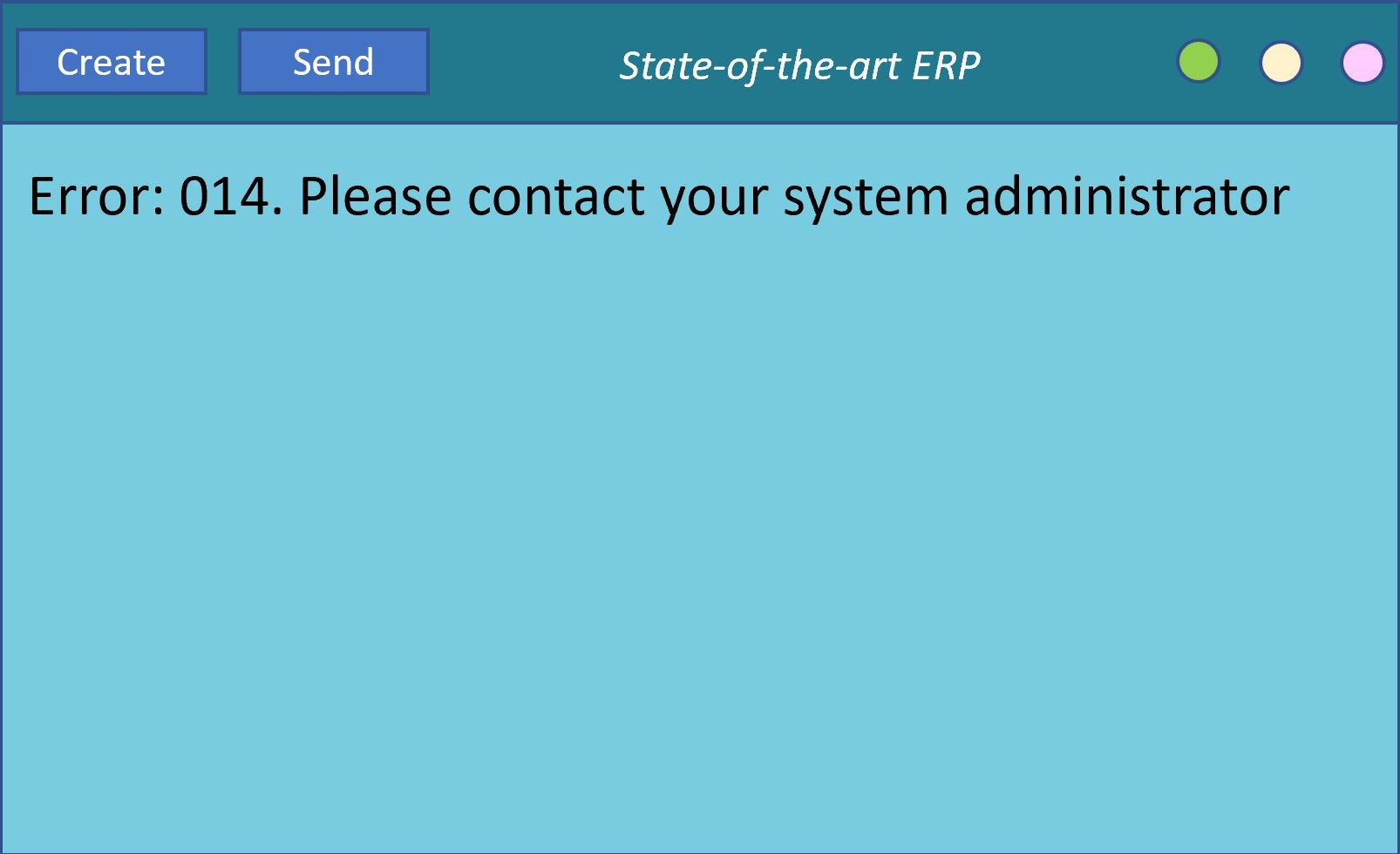A finance director is trying to secure funding for an opportunity
Introducing Kevin, the finance director of a large company. He has been working hard to finance a new business opportunity but still, there is nothing tangible that he can use to fund this project. Two days before the prospect closes, he gets a call from his CEO. She has struck a deal with a very good client to immediately pay for an order that has been just produced. The catch, the company must ship the agreed quantities at the same day. Kevin checks everything around this order. It is ready to ship. To cover all bases, he opens the invoice generating application and clicks the button “generate invoice”. This would be the last piece to make the deadline. However, instead of the expected PDF with the invoice, he gets a screen with only one sentence there: “Error: 014. Please contact your system administrator”.
On the emotional rollercoaster
The company has invested in a state-of-the-art finance system so Kevin, as a finance director, expects performance. This time however, there is an error. Despite all emotions, the only logical course of action, when such message appears on screen, would be to do what it says. So, he picks up the phone and calls his counterpart, the IT director. He knows about the urgency, not to say that his reputation is on the line too, so he commits to fix this within the hour.
Luckily, the technical team is outstanding and indeed, by early afternoon, the root cause for the issue is clear and the problem is resolved. Kevin manages to generate the required invoice and the order is on the road by the close of business on the same day. Next morning the company receives the payment as agreed and the opportunity, that everyone worked so hard on, starts. In a conversation later, the IT director explains what happened. Evidently, one of the products in the invoice has been set up only two weeks ago in the system landscape. It has not been invoiced yet and the product manager has missed to mark it as “available for invoicing”. This is a checkmark in the product management system, which indicates if the product can be invoiced or not. The IT director explains that this is a manual process, the product managers go to the system and manually put the mark next to the product. Moreover, this process and this system is under the jurisdiction of the marketing department and is hardly visible across the organization. A thorough review and improvement of this process has already begun and such issues would be contained in the future.
Linking this fictional case to our reality
We rely on systems, technology, complex algorithms, or IT to drive our sales, finance, business operations and decision-making processes. Tools that we use but know little about how they work. We employ large teams of specialists or consultants to make sure that all these systems are up and running, so that we can process our orders, ship the products, account the sales, and plan the future. And frankly, we need these tools. In the modern business world, speed of execution is a must. We need something to keep us ahead, to allow us to offer more competitive deals, to dispatch faster and to satisfy customer demand better. All these systems run on data. Data that we also later reuse for our business decision making. So, any issue with our data impacts twice – once our tools, then our decisions.
Defining data quality is a must
Your Data Inspector defines data quality as the ability of the data to deliver on the corporate goal. Data is data, ones, and zeros. But in our corporate context, we require these ones and zeros to trigger specific events. When the data prevents these events from happening, we say that this data has quality issues. In our example above, there was nothing wrong with the data itself. As per the system design, both options were valid – with and without the check mark. But when our goal is to generate an invoice against this product, the missing checkmark is an issue. The data does not serve the purpose of the organization and an opportunity is lost. These are the type of data quality issues that are worth finding and correcting before they hit.
How Your Data Inspector delivers on the need for clean data
Your Data Inspector specializes in finding such issues, fixing them, and preventing them from happening in the future. We have developed our “Path to clean data” approach that combines consultancy, data science and business analytics to deliver data that you can trust with the least amount of effort by your specialists, in a much shorter timeframe.

